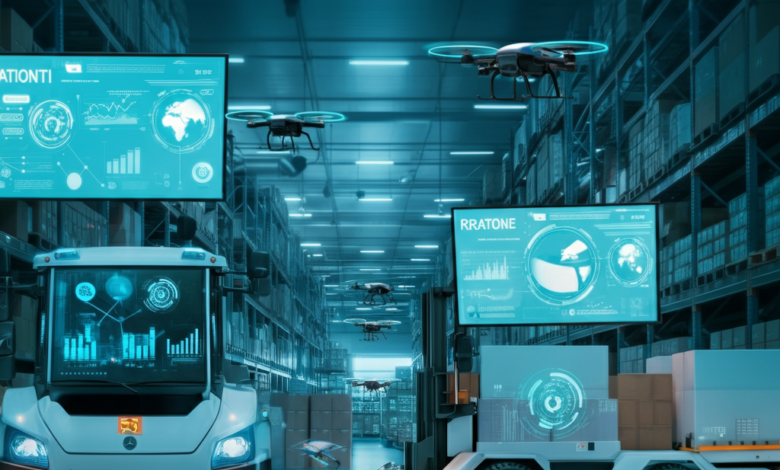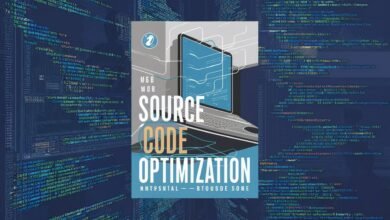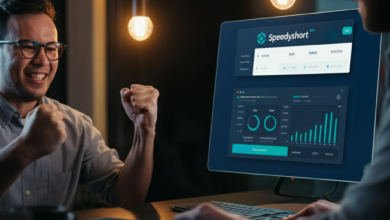Unpacking the Power of ProcurementNation.com Logistics

Efficient logistics are the backbone of a thriving procurement ecosystem. For professionals navigating the complex intersections of supply chains, warehousing, and transportation, ProcurementNation.com logistics provides a critical framework for success. By leveraging key strategies and technological innovations, businesses can streamline operations, reduce costs, and enhance overall efficiency.
This guide dives into the essentials of procurement logistics, breaking down key elements, emerging technologies, and actionable steps to overcome everyday challenges. Whether you’re new to procurement or an experienced professional, you’ll walk away with insights you can apply directly to your organization.
Why Logistics Matter in the Procurement Industry
The importance of efficient logistics in procurement cannot be overstated. Logistics directly impacts how companies source, store, and deliver goods, driving customer satisfaction and profitability. Inefficient logistics can lead to higher costs, delayed deliveries, and dissatisfied customers. By integrating logistics into the procurement ecosystem, organizations can achieve more streamlined supply chains and generate greater value from their operations.
Key Benefits of Efficient Procurement Logistics
- Cost Reduction: Minimizing waste, optimizing inventory, and improving transportation routes lead to significant cost savings.
- Improved Customer Satisfaction: Faster deliveries with fewer disruptions enhance customer relationships and brand reputation.
- Enhanced Operational Efficiency: Well-coordinated logistics streamline workflows and free up resources for strategic decision-making.
Breaking Down the Key Elements of Procurement Logistics
At its core, procurement logistics revolves around three fundamental components:
1. Warehousing
Warehousing involves the storage of goods to ensure availability when needed. Efficient warehousing strategies, such as just-in-time (JIT) inventory or automated storage systems, make a significant difference in overall costs and resource management.
- Tip: Adopt inventory management systems like barcoding or RFID for enhanced tracking.
2. Transportation
Transportation logistics determine how goods move from suppliers to warehouses and, ultimately, to customers.
- Pro Tip: Use route optimization software to reduce transit times and fuel costs.
3. Inventory Management
Effective inventory management ensures businesses have enough stock on hand to meet demands without overstocking.
- Actionable Insight: Implement AI-powered forecasting tools to predict stock needs accurately based on historical data.
Technology’s Role in Optimizing Procurement Logistics
Advancements in technology have revolutionized procurement logistics, allowing organizations to overcome inefficiencies and inaccuracies.
Tracking and Visibility
Real-time tracking systems, such as GPS and blockchain, ensure transparency throughout the supply chain. Companies can monitor shipments and proactively address delays.
- Example: ProcurementNation.com logistics offers end-to-end tracking tools to maintain supply chain visibility.
Forecasting Tools
Predictive analytics help businesses anticipate demand fluctuations and adjust inventory accordingly.
- Key Insight: AI tools provide data-driven insights to avoid overstocking or understocking, saving significant costs.
Management Systems
Integrated logistics management systems offer a centralized platform for overseeing inventory, transportation, and procurement activities.
- Recommended Tool: Enterprise Resource Planning (ERP) systems for seamless logistics coordination.
Overcoming Challenges in Procurement Logistics
Even with efficient systems, businesses often encounter significant challenges in procurement logistics. Here’s how to address them:
Managing Delays
Unexpected shipping delays can disrupt the supply chain and affect customer satisfaction.
- Solution: Leverage real-time updates from tracking systems to anticipate and mitigate delays.
Controlling Costs
Rising fuel prices, warehousing fees, and supplier charges are common pain points.
- Solution: Conduct regular audits to spot inefficiencies and identify areas for cost optimization.
Tackling Environmental Impact
Sustainability is a growing concern, with businesses under increasing pressure to minimize environmental impact.
- Solution: Focus on green logistics, such as using eco-friendly vehicles and optimizing packaging materials.
Best Practices for Improving Procurement Logistics
Organizations achieving success have adopted certain best practices to simplify and enhance their logistics processes:
1. Collaborate Across Teams
Proactive communication across procurement, logistics, and sales teams ensures smooth workflows and minimizes disruptions.
2. Invest in Automation
AI-powered robots and software reduce human error and expedite operations, especially in warehousing and shipping.
3. Embrace Sustainable Logistics
Adopt environmentally conscious practices, such as carbon-neutral shipping, to meet compliance standards and appeal to eco-conscious consumers.
Real Stories of Procurement Success
Case studies highlight the critical importance of logistics optimization. Consider two examples:
- Case Study 1: A multinational retailer partnered with ProcurementNation.com logistics to adopt GPS tracking systems, reducing delivery times by 20% and saving $200,000 annually.
- Case Study 2: A mid-sized manufacturer integrated blockchain technology for supply chain transparency, leading to improved supplier relationships and fewer disputes.
The Future of Procurement Logistics
The logistics landscape is evolving rapidly, with exciting trends on the horizon. Businesses that stay ahead of these innovations will gain a competitive edge.
Key Trends Shaping the Future
- Autonomous Vehicles: Self-driving trucks are set to reduce transit times and labor costs.
- AI-Powered Insights: Advanced algorithms will further refine demand forecasting and inventory management.
- Sustainability Initiatives: Circular supply chains and renewable energy-powered logistics hubs will become industry benchmarks.
Take Steps to Transform Your Logistics Strategy
ProcurementNation.com logistics exemplifies how integrating technology and best practices can transform the supply chain and procurement processes. By focusing on warehousing, transportation, and inventory management—powered by cutting-edge technology—businesses can achieve greater efficiency and adaptability in an unpredictable market.



